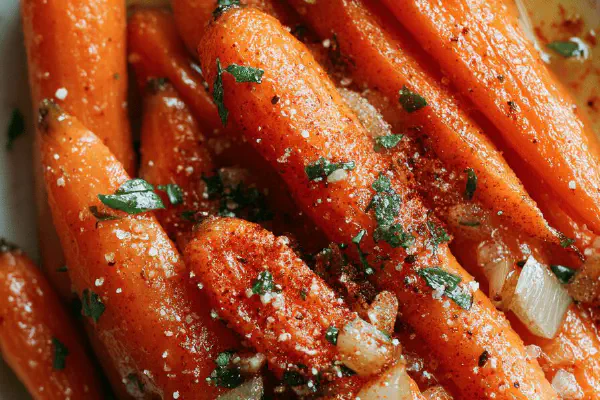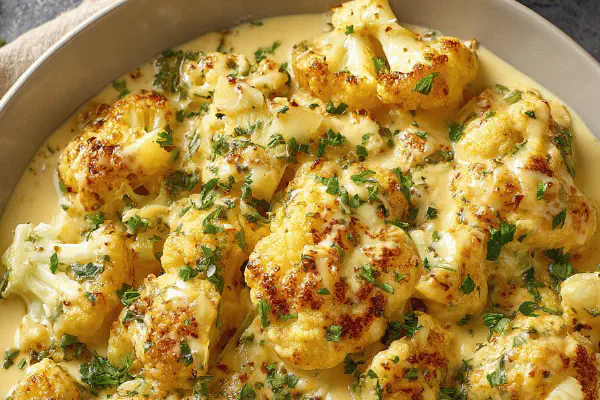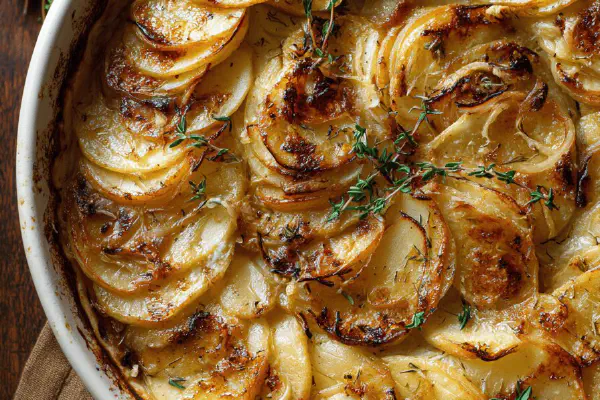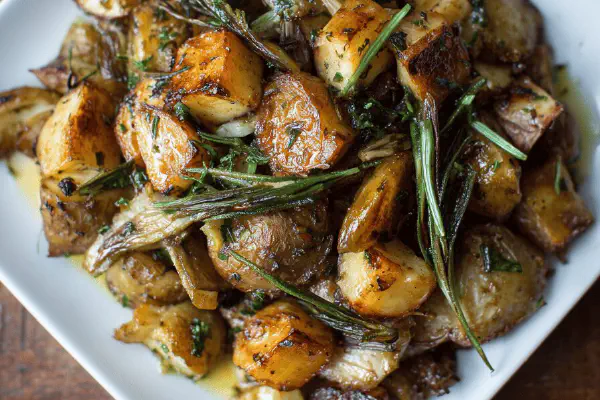Sous Vide Buttered Carrots Twist

By Emma
Certified Culinary Professional
Ingredients
- 600 g carrots peeled and cut into 3 cm chunks
- 20 ml unsalted butter
- 1 small shallot minced (instead of carrot tops)
- Salt and black pepper to taste
- Optional: pinch smoked paprika
About the ingredients
Method
- Preheat water bath at 88 °C (190 °F). I prefer a slightly lower temp to keep bite—too soft and it's just mush.
- In a vacuum or heavy-duty zip bag, toss carrots, butter, shallots, salt, pepper, and paprika if using. Mix inside bag to distribute. Don’t overdo salt or it will pull moisture prematurely.
- Vacuum seal or remove as much air as possible if using zip bag. Important to prevent floating during cook.
- Immerse bag fully. Clip or weight down if floating—carrots need full submersion.
- Cook for 35 minutes. Listen for subtle bubbling of water, almost like faint crackling—signal that sous vide is stable.
- Immediately after cooking, plunge the bag into ice water for 5 minutes—stops heat, preserves color. This step saved me from nasty overcooked sogginess once.
- Serve warm straight from bag for soft texture or sear fast in hot pan to caramelize edges. I’m crazy about that slight char contrast.
- If reheating, do gently in bag again or a quick pan toss. Don’t skip the ice bath if saving for later fridge storage—keeps fridge life 3-4 days.
- Butter can be swapped with extra virgin olive oil; shallots swapped for minced garlic button me here, garlic can overpower if too long cooked.
Cooking tips
Chef's notes
- 💡 Chunk size dictates bite. Bigger carrot pieces hold texture under low temp slow cook. Thin slices soften too fast, limp, no snap. Tried slices once; too mush. Chunks keep chewy but tender balance. Prep bag mixing key; butter melts evenly coating carrots; shallots don’t drown flavor but add mild aroma. Mix inside bag, not before, prevents loss and uneven spots. Salt first, light dose. Pulls out moisture, draws carrot flavor deep inside but too much dries out quick. Never skip air removal. Floating bag means uneven bath temps, random softness spikes. Use water even weight or clips. If vacuum sealer misses, zip lock bag and water press method good backup; watch air bubbles.
- 💡 Water bath at 88 °C, just under usual 90. Tweaked down for carrot bite, keeps firm edges soft inside. Over 90 cooked soft no snap, under 85 just raw in middle. Bubbling sounds key to watch, not quiet like off, not roar boil either. Slight bubbling edges = stable heat. Learned that watching bubbles saves texture; bad temp equals broken fibrous mush. Five-minute ice bath after cooking stops carryover heat quick; bright orange colors stay, texture snap holds. Skip bath? Color dulls, soggy by next day. Don't skip. Rest time in bag post-ice optional, short or mushy risk.
- 💡 Butter amount minimal. Heavy butter smothers carrot’s natural sweetness, masks shallot’s fragile aroma. Olive oil swap works for dairy allergy, changes flavor profile—less rich, more grassy. Smoked paprika optional but adds light smoky depth, comes in handy if carrots bland or dull. Fresh cracked pepper brightens overall taste. If using garlic instead shallots, mince finely, toss last before sealing; garlic cooks fast, can overpower if overdone. Searing after sous vide adds aroma, color contrast, crunch. Doesn’t take long—30 seconds per side hot pan. Watch for browning, not black charring.
- 💡 Vacuum seal or zip lock air removal critical. Floating bags catch uneven water temps, cause uneven softness. Tried without; uneven cooker results in parts mush. Water displacement method helps. Press air slowly out, clip open ends, seal slowly once submerged. Bag fully submerged for uniform cook. Weighted down if needed. Cook time fixed to 35 minutes; longer makes mush, shorter raw core. Timing trial-error with texture is part of process. Watch bubbling and carrot color during cook for clues. Ambient humidity in kitchen affects timing subtly, keep note.
- 💡 Reheating tricky. Keep carrots in sealed bag, gentle heat, don’t reboil. Pan toss fine but short, to keep bite. If reheating in bag, return to 85-88 °C water max, no longer. No microwave. Watery mush guaranteed. Store leftovers sealed, ice bath first stops heat and locks texture, fridge life 3-4 days max. Bring back to temp before serving to avoid cold core. Salt level tricky—overdoing pre-sealing pulls too much moisture, carrots dry, break texture. Adjust salt after cook if needed. Sometimes no salt before sealing, just sprinkle fresh at finish. Keep experiments.
- 💡 Temp stability beats precise timers. Sous vide water temp fluctuates; too big spikes means carrots overcook, lose bite. Checked with a digital thermometer layered inside water; bubbling alone doesn’t guarantee perfect temp. Visual cues matter too—carrot color deepening, surface firmness when touched through bag. Texture tactile more useful than time alone. Searing after helps mask minor overcooks by adding crispness. Not mandatory but recommended for flavor complexity. When vacuum sealer breaks, zip lock plus careful air removal plus weighted bag keeps cook on track despite. No excuses for bag flotation.
Common questions
Why salt before sealing?
Salt draws water out before cook; if overused, carrots lose crunch, become watery inside bag. Salt light, just enough to season, draws carrot flavor in. Pulls moisture but not too much. Helps seasoning inside. Skip salt, bland carrots. Balance tricky, try small first.
Can I substitute butter with oil?
Yes. Olive oil works, changes profile, less sweet, more sharp grassy notes. Butter adds richness, oil lighter mouthfeel. Dairy intolerants better oil. Don’t use heavy oils like coconut, overpower carrot’s mild flavor. Experiment small portions.
Common issue with soft carrots?
Usually temp too high or time too long. 88 °C is sweet spot for chunked carrots. Larger chunks hold better. Also bag floating causes uneven cook; hot spot soft, cold spot raw. Remove air properly. Ice bath after cook mandatory to stop further softness.
How to store leftovers?
In sealed bag best. Ice bath first after cook, then fridge. Keeps color and snap longer. Reheat gently sous vide or pan, avoid microwave mush. 3-4 days fridge max, no longer. If bag punctured, transfer to airtight container but texture suffers faster. Freeze not recommended, changes texture.



